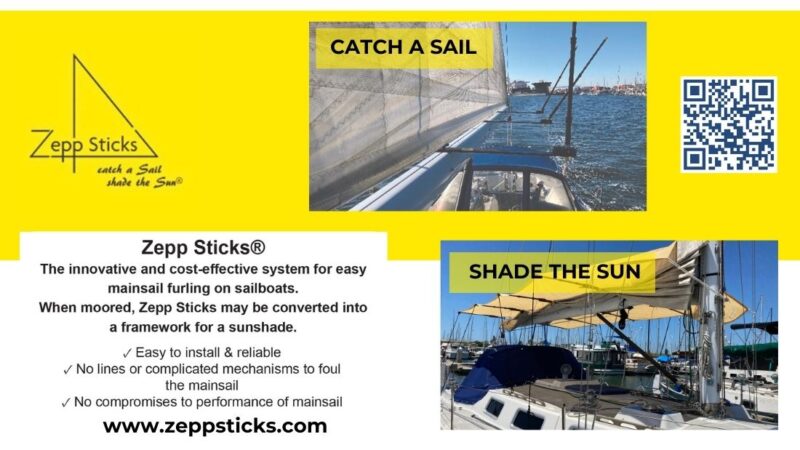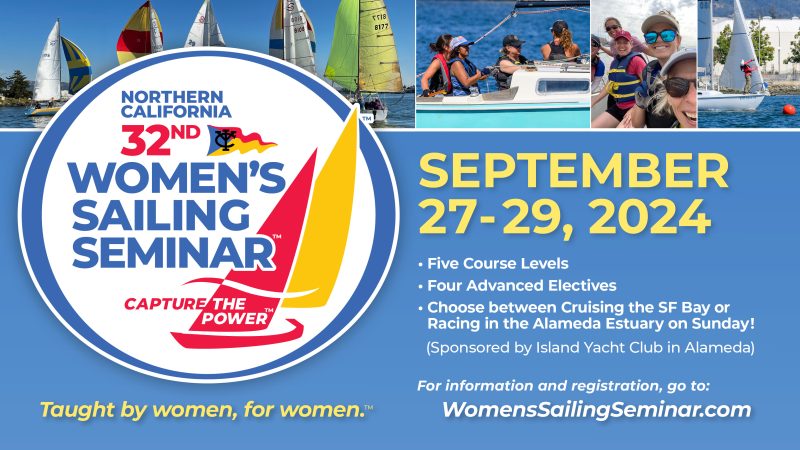
- General Sailing
- Racing
- International Racing
- West Coast Sailing
- Northern California Racing
- Wings & Foils
Winning Weekend: Cayards, Hamlin, Heineken All California Winners
California has always been a sailing powerhouse, with champions emerging from up and down the coast in all events, from the America’s Cup to the Volvo Ocean Race, Olympics and endless world championships in a wide variety of classes. The past weekend saw some great results in the very competitive world of small-boat and wingfoil sailing.
5O5 World Championship
Three California teams were in the top 10 of the 5O5 World Championship held August 1-10 in Varburg, Sweden. The 5O5 is one of the world’s most difficult, technical and competitive fleets, made even more challenging when there are 95 boats in the fleet! In Varburg it was 70-plus-year-old Howie Hamlin who was the top Californian, in third place (just two points behind first) ahead of last year’s world champions Mike Martin and Adam Loory in fourth and the Santa Cruz 5O5 team of Mike Holt and Rob Woelfel in seventh. You can see the complete results here.
Star North Americans
Closer to home, the Newport Harbor Yacht Club hosted the Star North Americans from August 5 to 10. There were 25 boats on the line in this star-studded class, and it was 1988 Star world champion Paul Cayard, with his son Danny as crew, who came out on top of this competitive fleet.
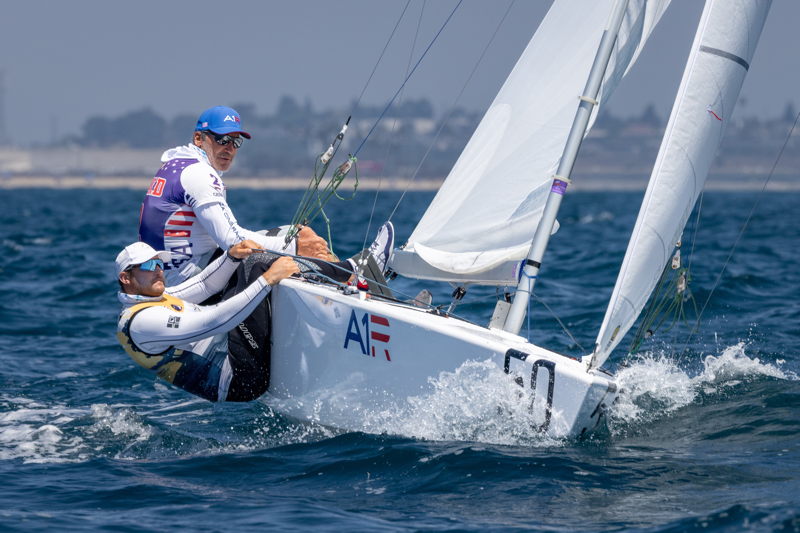
2009 SDYC Star world champion George Szabo and crew Guy Avellon were a close second. Renowned Bay Area sailor John Kostecki, with crew Austin Sperry, was back in the game, taking sixth in class.
Paul currently serves as president of the International Star Class Association and is current North American champion. The Star class has been hosting world championships since 1923 and will be holding its World Championship September 4–13 with 62 boats currently signed up to compete at the San Diego Yacht Club. The San Diego Yacht Club is also home to Star world champions Mark Reynolds and Vince Brun. Complete North American Results here.

Summer Wingding — US WingFoil Championship
Even closer to home was the first US WingFoil Championship, hosted August 9-11 by the St. Francis Yacht Club. It wouldn’t surprise anyone who’s followed kite-foiling or wingfoiling for a while to find out former kiteboarding world champion Johnny Heineken came out on top after finishing with 10 bullets in 15 races, with his two throwouts being fourths, and the three other races taking second. With an incoming current it was flat water for the three-day event that was sailed in winds from 10–34 knots. Find the full results of this first-ever national US Sailing WingFoil championship here.
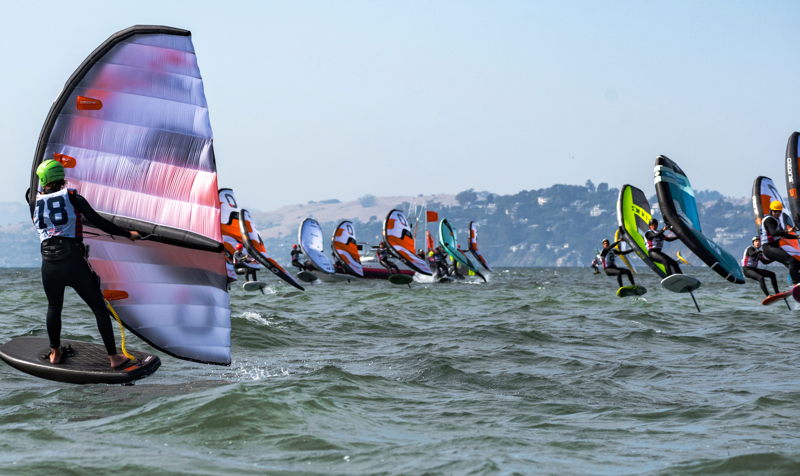
Around the world or around the buoys, West Coast sailors continue to lead the charge in an endless list of extremely competitive events. Look for a recap about the Bay Area’s impressive Olympic sailors, Daniela Moroz, Hans Henken (bronze medalist) and David Liebenberg, in the upcoming issue of Latitude 38. In classes up and down the coast a new generation of sailors is following in the wake of these California champions.
Mystery Clipper Cove Platform Identified As “Float Lab”
Earlier this week we received word from concerned boaters about a structure that had mysteriously appeared in the entrance to Clipper Cove. The news began circulating on social media, while we began tracking down the origins and owners of this new kid in the cove. We learned the structure is a float lab operated by San Francisco’s Architectural Ecologies Lab. We reached out to the BCDC, USCG, and TISC to learn more, and to Margaret Ikeda and Evan Jones, co-directors of the Architectural Ecologies Lab, California College of the Arts, San Francisco, who sent us the following information about the platform.
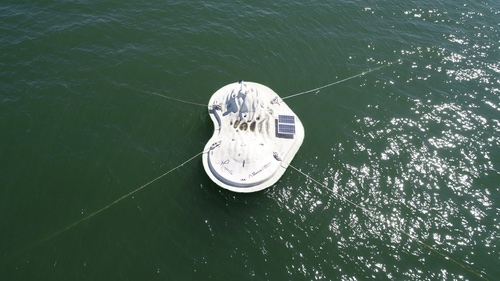
When it comes to quirky floating things, we imagine the boaters of S.F. Bay have very nearly seen it all: old boats and new ones; fast and slow ones; boats that are houses and even houses that are boats. “Google barges” to DIY projects and everything in between. You may have seen another unusual-looking structure floating on the north side of the entrance to Clipper Cove that arrived the first week of August, and in the strong lineage of creative watercraft made of FRP (fiber-reinforced polymers), this structure has an equally compelling story. It is called the Float Lab.
The Float Lab is a floating artificial structure, that, like everything floating, relies on principles of buoyancy, ballast and stability. The electronics, bilge pumps and batteries are typical of boating technology. However, its overall shape, small textures and unique topology depend on advances in parametric modeling, digital fabrication and CNC mold making. The design began with an insight from marine ecologists to turn ocean-fouling communities on the bottom of floating structures into an ecological asset. For boats, fouling creates an unwanted “drag.” For structures that don’t move, though, the hull can become an upside-down reef. Yet there is little research into the types of communities that can inhabit these underwater surfaces and which types of conditions different marine animals prefer. Questions such as these inspired the collaboration between architectural designers at California College of the Arts (CCA) in San Francisco, marine ecologists from Moss Landing Marine Laboratories (MLML), and a composite manufacturer from American Canyon. Each discipline inspired the others to create a novel form, with unique habitat surfaces, above and below the water.
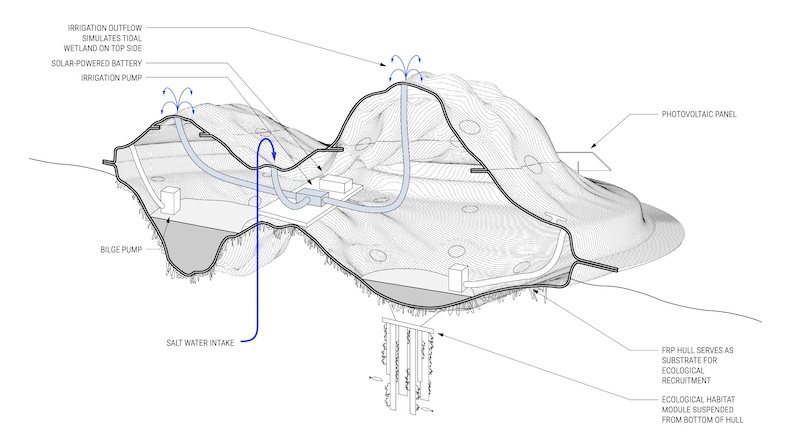
The Float Lab’s first home for five years was in the remote cove of Middle Harbor Shoreline Park (MHSP) in collaboration with the Port of Oakland. Since there had been nothing like this before in the Bay, it took over a year for the Float Lab to be designated under the Department of the Army Nationwide Permit (NWP) 4, for Fish and Wildlife Harvesting, Enhancement, and Attraction Devices and Activities. At MHSP we hung different underwater experiments testing productive fouling, gathered data with sensors, and even captured acoustic data during the pandemic to record the sound in the Bay with very little boat traffic. We put a time-lapse GoPro on top and got a glimpse into the variety of birds that used it to perch, feed, dry off and sleep. We moved it recently to Treasure Island for a few important reasons: to engage with students and the public about ocean ecology, and to have better access to ecological hanging experiments. As with any move, the various applications, permits, allowances and letters of support were onerous, but BCDC approved the application for this specific location in part because of the public access and educational benefits that will accrue inside the cove and with our community partners like TISC. We anchored the Float Lab with the same system recommended by the Port of Oakland divers: four 9-ft-long helix screw anchors with a 1:4 ratio of water depth to distance to keep the Float Lab at the most stable location.
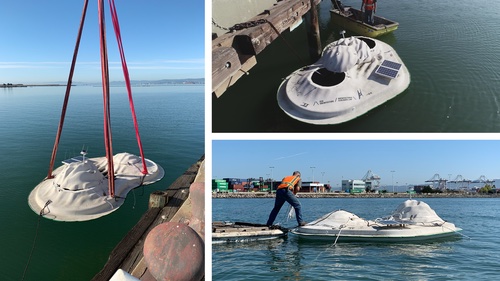
TISC is excited to engage its participants with the Float Lab, too. Each year TISC gets over 1200 kids from San Francisco Unified School District out on the water for a Science and Sailing lesson in Clipper Cove. We hope these future boaters of S.F. Bay will benefit from the Float Lab’s bringing more educational opportunities to TISC and from increased attention to TISC, the cove and the health of the Bay.
Clipper Cove is a fantastic venue for so many different folks who are passionate about Bay access and ocean health. While CCA is excited to do its part by continuing to learn and research ways to make our communities healthier and more resilient, we are also sensitive to the idea that Clipper Cove is a community resource with many kinds of users.
We learned that the sedimentation at the entrance to the cove is a long-term problem that gets worse every year. We were told that in this magazine this has been a frequent topic of conversation for a long time and that it provides tips for getting into and out of the cove, which is getting busier. Days after our move to Treasure Island we learned from some of you [Latitude readers] the complication the Float Lab is causing getting into the cove. This was new information to us, so we are actively working on ways to fix this situation. We do not want to be part of the problem; we are hoping to be part of a solution protecting the health of our oceans and providing incredibly unique and place-based educational opportunities for our diverse community of young people in the Bay Area. We hope you get to see the Float Lab next time you visit Clipper Cove. Make sure to tell your crew about how the project is protecting the health of our oceans in a unique and innovative Bay Area way!
Learn more about the Float Lab here.
Catch a Sail or Shade the Sun With Zepp Sticks
54th Shaw Island Classic Yacht Race Sails Through Varied Conditions
Sunshine, variable winds and channel fog set the stage for the 54th annual Shaw Island Classic yacht race, hosted by the San Juan Island Yacht Club (SJIYC) on August 10. This race is unique in that Shaw Island is the only mark and can be rounded in either direction. It is only a 13-mile course, but shifting winds, variable currents, narrow, rocky channels, and ferry traffic often turn it into a nautical chess game.
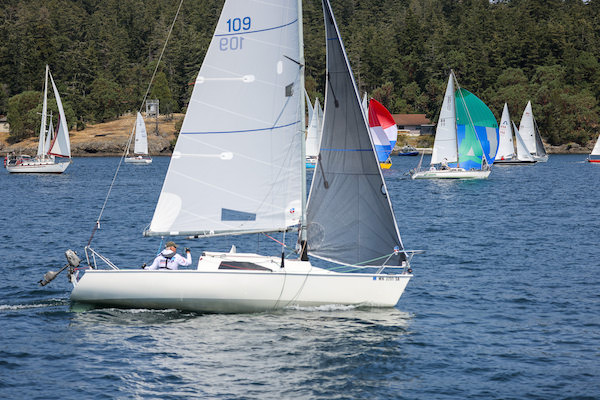
“It was a drag race to Wasp Passage,” said Ken Machtley, skipper of Treachery, a Martin 242, and first-place winner in the PHRF-C division and first overall. “Four Orcas Island boats (a Soling 27 and three Martin 242s) and the venerable Wild Rumpus, a Santa Cruz 27, were in a dead heat up San Juan Channel. Wasp Passage provided its normal ‘wind from every direction’ challenges, though the ebb helped to push us along and make quicker work of this tricky section than [in] most years.”
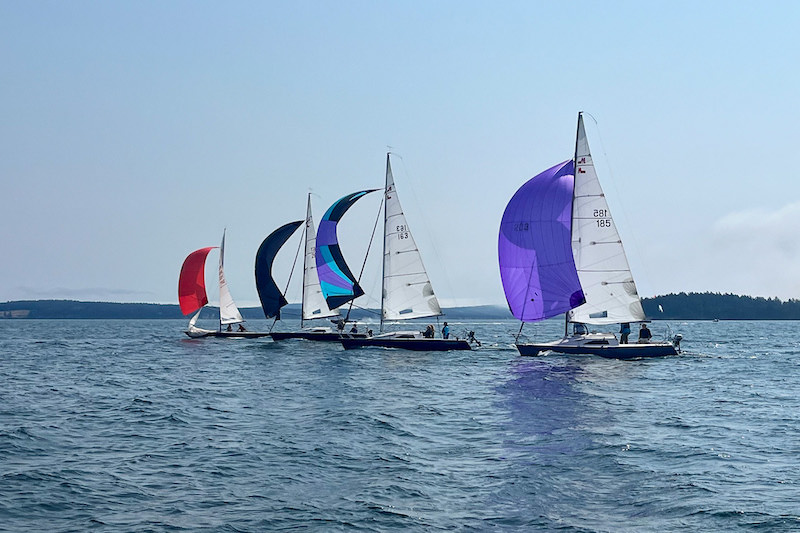
Two-thirds of the fleet of 39 boats took a clockwise course, betting there was enough wind at the start to overcome an ebb current in the San Juan Channel. This course would allow riding the ebb through the notoriously narrow and windless Wasp Passage. That bet paid off with all but one clockwise boat finishing the race. While clockwise dominated, most of the counterclockwise racers also finished, with 36 boats crossing the line before the 6:00 p.m. cutoff.
“It was one of the best sails in recent memory!” said Nigel Oswald, singlehanded skipper of Makika, an F25C trimaran, placing first in the multihull division and first to finish on elapsed time in 2:28:36.
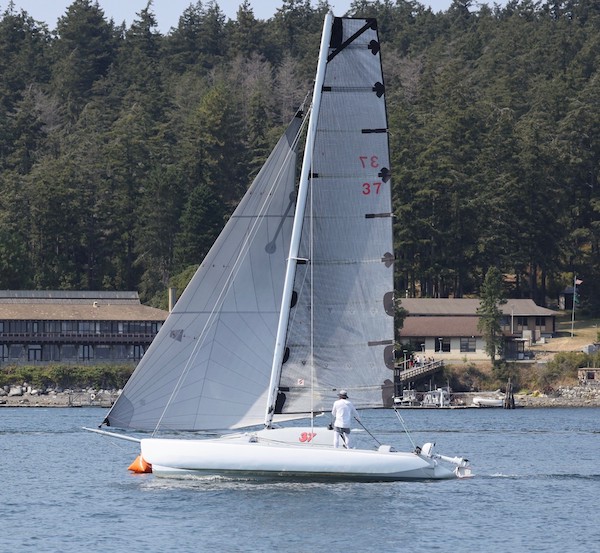
“More wind than expected and we had a close battle with Mist (a Transpac 52) all the way around. The holes were much shorter than normal, just a couple of dead spots for a couple of minutes and the rest of the time we were always moving.”
The clockwise boats made short work of reaching the midway point in Cayou Channel on the northeast side of Shaw Island, where the winds usually turn light and fluky. Still riding the ebb, racers floating past Hankin Point met up with the unusual combination of channel fog and 9- to 12-knot winds.
“We didn’t have the modern navigation aids,” said Michael Durland, skipper of Challenge, a 6-Meter and first-place finisher in the PHRF-B division, “so had to pick a boat ahead of us in the fog who looked like they were headed home and then once we passed them find someone else to tail until the fog lifted and the finish line was in sight. Always a treat to pass up these modern go-fast boats with a 90-year-old classic.”
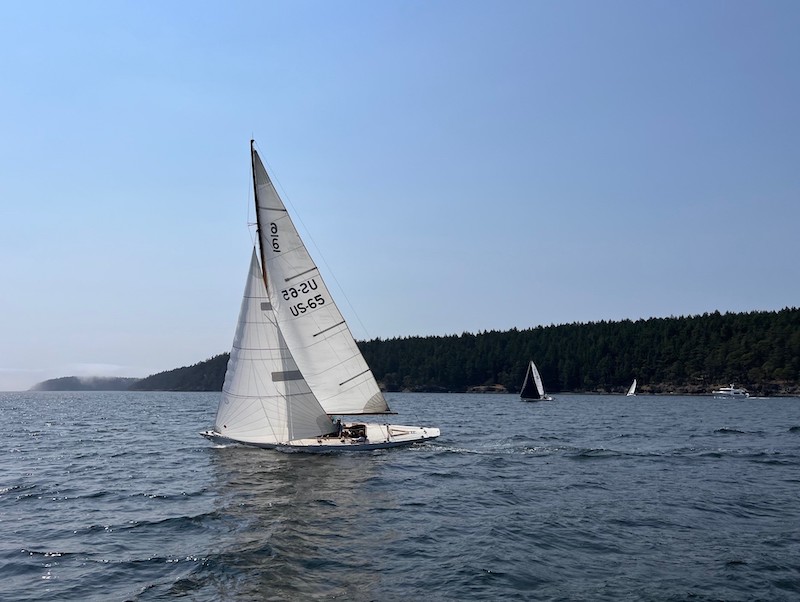
Thank you to the Washington State Ferry captains of the Samish, Tillikum, Chelan, and Yakima who carefully maneuvered through the racing fleet. A particular shout-out goes to the captain of the Samish, who edged north through the narrow waterway between Flat Point and Canoe Island in Upright Channel, in a bank of fog with the racing fleet beating to windward south.
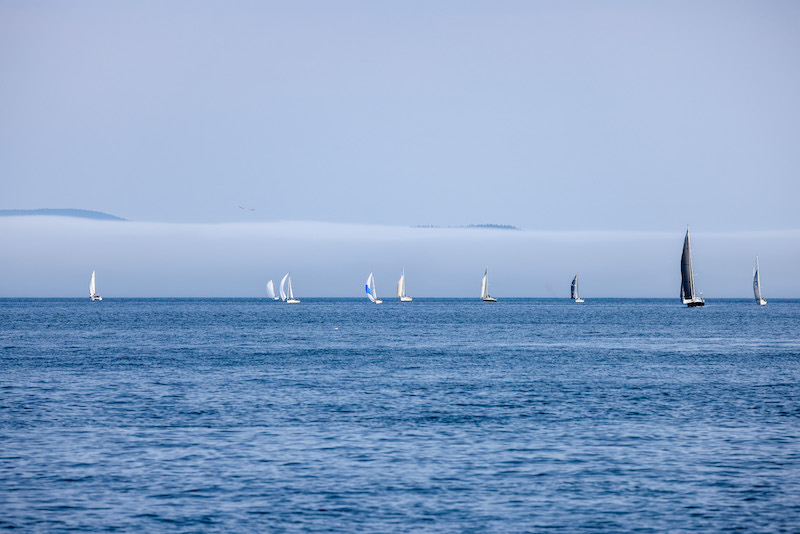
Spirits were high and spirits were enjoyed as racers once again gathered at the lovely SJIYC clubhouse overlooking the harbor for post-race banter and a hearty lasagna dinner served by the first mates.
“Overall, we had an exceptional day on the water, with enough wind to make it a fast race, spotty fog to add an interesting twist to navigation at times, and a nice-size fleet of exceptional competitors to sail against,” added Ken Machtley.
The Perseverance Award, in honor of Wally Lum, who skippered his Seabird yawl Marquita in the first Shaw and has competed in every race since, goes to the last boat to cross the finish before the deadline. This year’s winner was Nisku, a Crealock 34 skippered by Luis Zappelli. Most winners get a brag flag and an inscription on a perpetual trophy, but the lucky winner of this award gets a bottle of champagne!
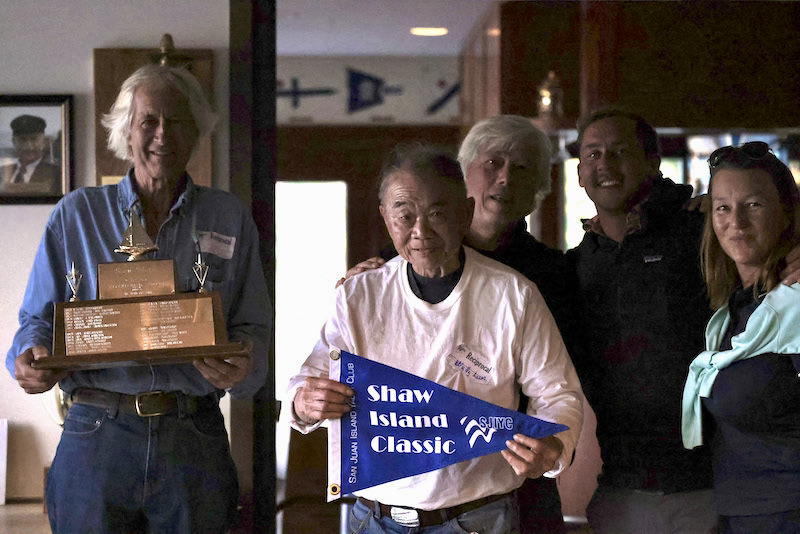
Complete results and photos are posted at the club’s website at http://sjiyc.com/shaw.
Thanks to Peg Gerlock for sharing this fun report on the Shaw Island Classic. If you have a sailing story or photos to share, email us at [email protected].
A Long Shot: Who Has a 1997 “Some Like It Hot” T-Shirt?
We received the following email from Keri Hendricks, looking to get lucky in finding an old T-shirt.
“Could you direct me to someone who might have a box of old 1997 “Some Like It Hot” T-shirts? Mine is sure tattered and well-loved from our trip so long ago.”
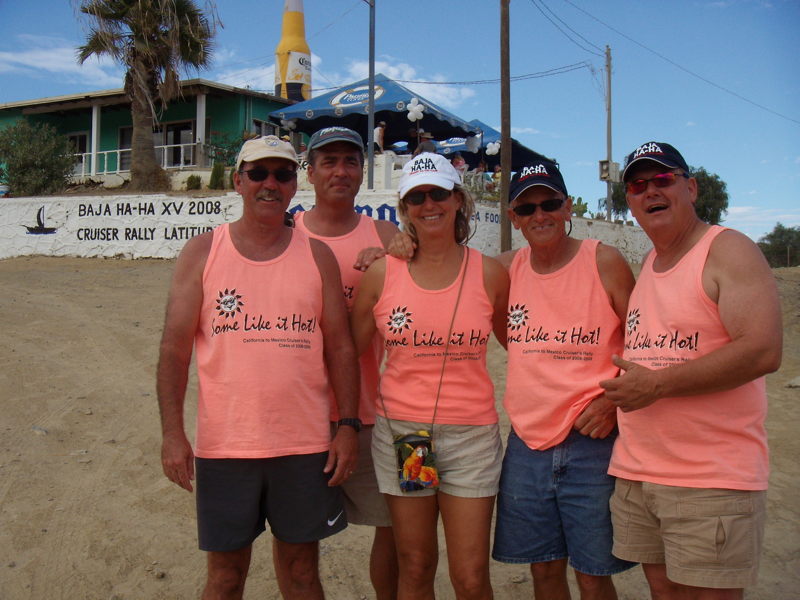
“I think our name on the list of cruisers was about 300-something. Vessel was Ramblin’.
“This is a long shot, but thought I’d try it. Sure hate missing all the upcoming festivities, but we are not in great health to travel. Thank you.” — Keri Hendricks.
We do have some old things in our attic, garage and basement, but not one of these. Of course, we’ll be totally amazed if someone has one of these collectors’ T-shirts from 1997, but we’re often amazed by our readers!
If you’ve got one to spare email us here. Actually, if you have one at all, send us a pic — we’d love to see it.
If you want a future collectible Latitude 38 T-shirt you can buy one here.

